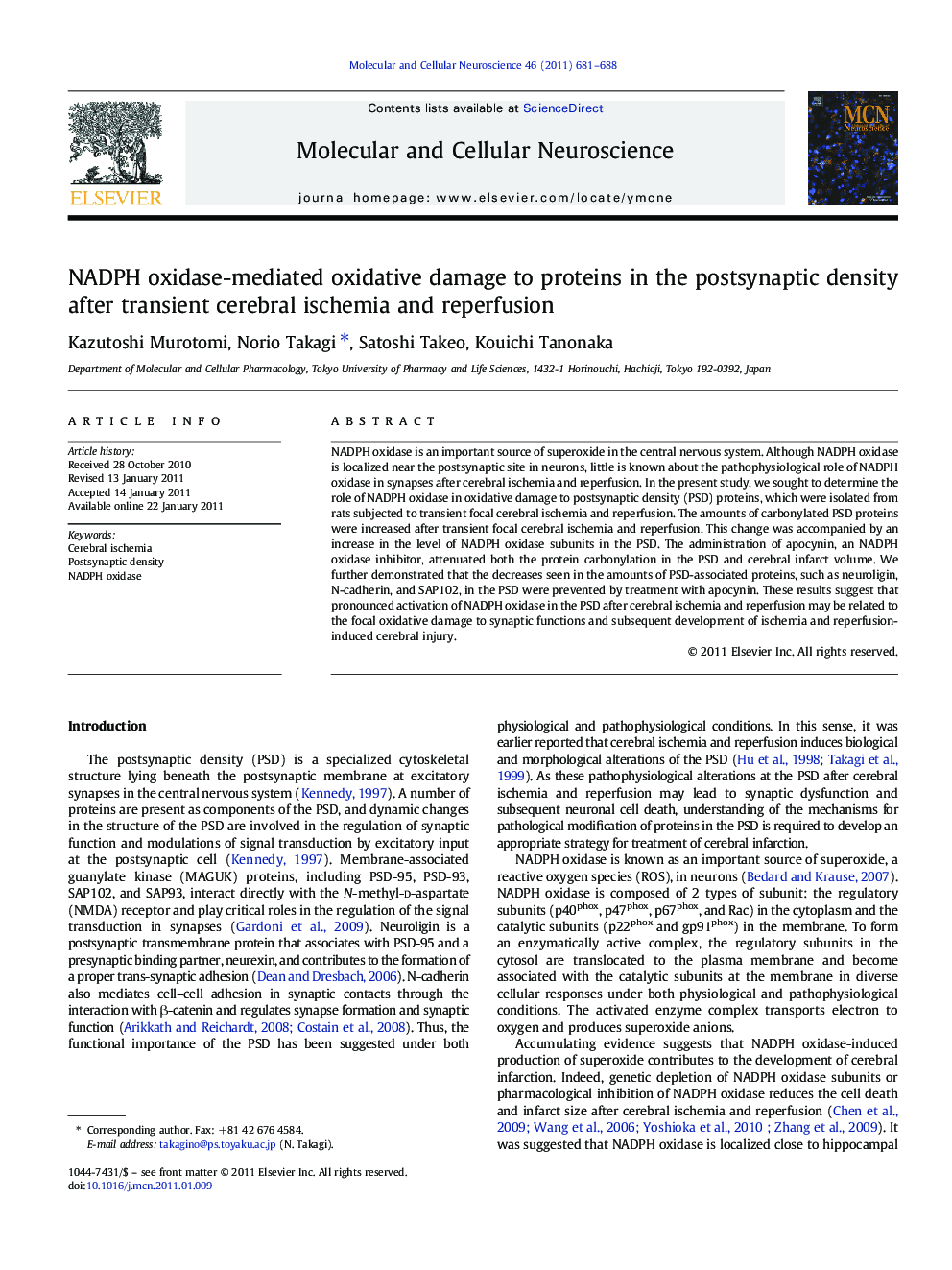| Article ID | Journal | Published Year | Pages | File Type |
|---|---|---|---|---|
| 2198678 | Molecular and Cellular Neuroscience | 2011 | 8 Pages |
NADPH oxidase is an important source of superoxide in the central nervous system. Although NADPH oxidase is localized near the postsynaptic site in neurons, little is known about the pathophysiological role of NADPH oxidase in synapses after cerebral ischemia and reperfusion. In the present study, we sought to determine the role of NADPH oxidase in oxidative damage to postsynaptic density (PSD) proteins, which were isolated from rats subjected to transient focal cerebral ischemia and reperfusion. The amounts of carbonylated PSD proteins were increased after transient focal cerebral ischemia and reperfusion. This change was accompanied by an increase in the level of NADPH oxidase subunits in the PSD. The administration of apocynin, an NADPH oxidase inhibitor, attenuated both the protein carbonylation in the PSD and cerebral infarct volume. We further demonstrated that the decreases seen in the amounts of PSD-associated proteins, such as neuroligin, N-cadherin, and SAP102, in the PSD were prevented by treatment with apocynin. These results suggest that pronounced activation of NADPH oxidase in the PSD after cerebral ischemia and reperfusion may be related to the focal oxidative damage to synaptic functions and subsequent development of ischemia and reperfusion-induced cerebral injury.
